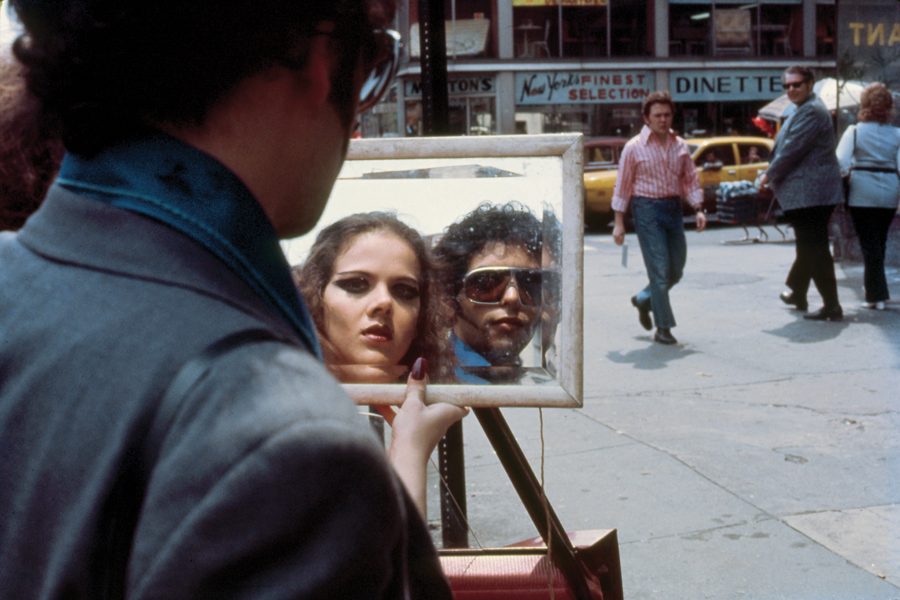Block Museum presents film series “Ism, Ism, Ism”
A still from “Agrippina.” The film is one of several Latin movies that will be screened during “Ism, Ism, Ism” a Latin experimental film series currently showing at the Block Museum.
October 16, 2019
When L.A.-based critic and filmmaker Jesse Lerner was looking for often overlooked productions to feature in the series “Ism, Ism, Ism,” he knew there was one film he wanted to include — and the creator lived in Mexico City’s Roma neighborhood. Armed with just a set of initials and the director’s occupation, he flew halfway around the world to secure a copy of the footage.
“It was like fishing in the dark,” Lerner said. “Sometimes you have to do the detective work in order to help these movies come to light again.”
Along with filmmaker Luciano Piazza, Lerner is the co-curator of the touring program “Ism, Ism, Ism: Experimental Cinema in Latin America,” which is on view at the Block Museum of Art until Nov. 16. The series aims to offer a wide panorama of the artistic movements by surveying avant-garde filmmaking across Latin America since the 1930s. “Ism, Ism, Ism” features both contemporary works and important historical productions that have gone unseen for decades.
The film series was organized by Los Angeles Filmforum as part of the “Pacific Standard Time: LA/LA” enterprise, a far-reaching initiative that explores Latin American and Latinx art throughout history. With its mission to celebrate a global perspective of art, the Block will present the first showing of these films in Chicago alongside the ongoing exhibition “Pop América, 1965-1975,” which highlights a hemispheric vision of the pop art genre.
According to Lerner, films from countries such as Argentina, Brazil, Colombia and Puerto Rico are often overlooked and excluded from the discussions of experimental cinema. To address this, a curatorial team composed of nine researchers worked internationally to rediscover and study works culled from several movie archives. The films are organized into nine separate collections that incorporate a variety of styles and themes such as Latin camp, found footage and countercultural movements.
Michael Metzger, the Block’s Pick-Laudati curator of media arts, said the movie series has the potential to reshape the dominant narrative of experimental filmmaking, which is often limited to the U.S. and Europe.
“This program promises to profoundly revise the way we understand the history of artists’ cinema,” Metzger said.
“These underseen works expand the conversation around the 20th century’s visual culture, which can be transformative for a new generation of artists, scholars and filmgoers.”
Metzger added that many productions in “Ism, Ism, Ism” are made by amateur filmmakers. Due to their lack of professional equipment, these filmmakers created works that “bear the traces of loss and neglect” visually and materially. For example, “The Blue Lobster,” directed by famed author Gabriel García Márquez and other artists, was shot on reversal film, a technique that results in poor color quality, rapid fading and discoloration of highlights. However, Metzger said re-evaluating works created in an amateur but brave format” helps widen the focus of film history.
In an attempt to reach and engage diverse audiences, the Block will collaborate with four independent venues across Chicago to co-present the film series, according to Lindsay Bosch, the Block’s senior manager of marketing and communications.
The partnership includes ACRE Projects and filmfront in Pilsen, Comfort Station in Logan Square and the Nightingale Cinema in Wicker Park. The screenings at these theaters will be free.
“We see the film series as a way to make history accessible,” Bosch said. “Through bringing it outside of the museum, we want to reach different communities that gain the most from encountering these images, and to create dialogue around the alternative medium.”
Email: [email protected]
Twitter: @aaronwangxxx
A previous version of this story misstated the format of the works that were re-evaluated. They were amateur works. This story also misstated the city where Lerner came to find the movie’s creator. It was Mexico City’s Roma neighborhood. Due to incorrect information from a source, the story also misstated the financial accessibility of the film series. All of the “Ism” programs will be free. The story also The Daily regrets the errors.


